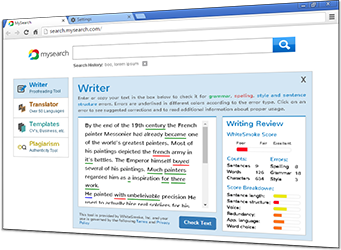How to Write a Legal Document
Writing a legal document needn't be a difficult or overwhelming experience. Many legal documents - for instance living trusts, power of attorney documents, wills, and divorce documents - can at least be partially written before bringing in a lawyer, and this can save significantly on some legal expenses. In fact, while there are some special tips to keep in mind for legal writing, the same fundamentals rules for clarity and consistency apply as in all other fields of writing. You must organize your ideas coherently, write your text with a logical flow, and have good editing skills.
Whether you are a legal professional, or just someone who wants to save expensive legal fees by writing a legal document yourself, WhiteSmoke Writing Software can help bring an extra level of professionalism to your legal documents. As an all-in-one solution, WhiteSmoke features a grammar checker, a spell checker, a thesaurus-dictionary, and special enrichment features to make your letter writing stand out.
General Legal Document Tips:
- Plan your document. Make yourself a list of all the points that need to be addressed.
- Use a readable typeface, like Times New Roman.
- Divide your document into sections, and the sections into smaller segments if necessary.
- Don't use any slang, and omit needless words.
- Use the active voice, avoid the passive voice.
- Simply wordy phrases.
- Organize your content in order of importance.
- Use numerals instead of written words for numbers.
- Know where to go for reliable answers on correct grammar and spelling.
Keeping these points in mind, you can begin to write your legal document.



